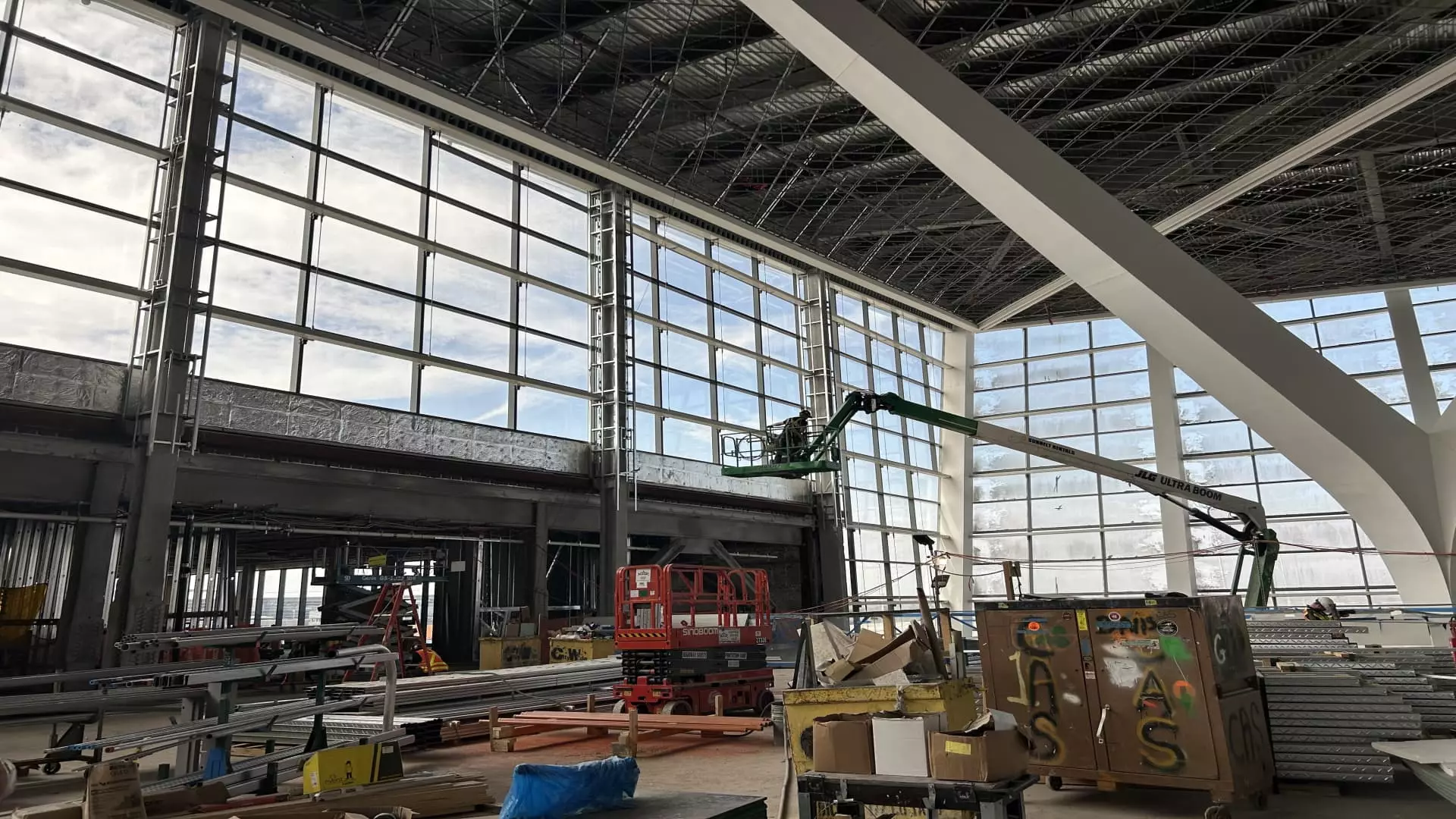John F. Kennedy International Airport’s ambitious $9.5 billion Terminal 1 project exemplifies the relentless push by policymakers and developers to modernize America’s aging air transport infrastructure. The sheer scale of the project signals a desire not just to catch up with global standards but to establish a new paradigm of international travel in the United States. Yet, beneath the shiny veneer of glass and steel lies a contentious debate: Is this investment a strategic move to make JFK a world-class hub, or is it an extravagant gamble on the future of air travel that may not pay off?
This terminal, slated to open in mid-2026, is a testament to the center-right wing belief in strategic infrastructure investment, yet it raises serious questions about priorities and fiscal responsibility. While proponents tout it as essential for accommodating growing international traffic, critics might argue that such monumental spending often yields diminishing returns, especially when weighed against America’s broader economic and political challenges. The impulse to create a “luxurious,” passenger-centric hub could still turn into an overreach—an ostentatious display of ambition at a moment when the aviation industry grapples with turbulence.
Design Innovation Versus Practical Limitations
The architectural aspirations for the new Terminal 1 are undeniably impressive. With a butterfly-inspired design that maximizes natural light—a feature that promises passengers a more pleasant experience—the project moves away from traditional, utilitarian airport terminals. The decision to streamline customs, security, and departure halls onto a single level demonstrates a forward-thinking approach to operational efficiency. It places passenger comfort above all else, aligning with center-right liberal ideals that favor smart, user-centered infrastructure.
However, there’s a flipside: history shows that beauty often comes at a cost. The focus on aesthetics and innovative layout might overshadow practical concerns such as congestion, maintenance complexities, and the integration of new technologies. For instance, while the concept of a multi-floor bridge of glass is visually striking, it may also be vulnerable to issues like weather-related wear or technological failures. Additionally, the reliance on cutting-edge design to boost the passenger experience might not translate into lasting operational gains if not implemented meticulously.
Economic Implications and Political Calculations
Funded largely by public money and part of a $19 billion overhaul, this project exemplifies the classic center-right approach: strategic investment to bolster economic competitiveness. The upgrade is positioned as vital to New York’s status as an international hub, promising increased passenger capacity—up to 14 million annually—and new gates capable of handling the largest long-haul aircraft. Yet, critics could argue that such colossal spending on a single terminal might be shortsighted, especially given the broader macroeconomic context.
The aviation industry is in a state of flux. Post-pandemic recovery, fluctuating fuel prices, geopolitical tensions, and emerging environmental regulations threaten to reshape international air traffic forecasts. Betting heavily on these future trends could prove perilous. The political calculus here involves projecting strength and innovation, but it also risks a disconnect between today’s investment and tomorrow’s market realities. If demand for long-haul international flights stagnates or declines, JFK’s shiny new terminal may become a white elephant, expensive to operate and maintain.
Strategic Competition and America’s Global Edge
From a center-right perspective, positioning JFK as an ultra-modern international gateway aligns with broader interests in maintaining global economic and political influence. The ability to attract premium, long-haul flights appeals to a consumer class that values convenience, luxury, and efficiency. The inclusion of retail, dining, and duty-free shopping—especially the novel concept of cash-and-carry duty-free—is designed to elevate customer experience and generate additional revenue streams.
Nonetheless, this focus on upgrading JFK’s international stature overlooks the ongoing crisis of American infrastructure as a whole. The overarching priority should be not just to build impressive terminals, but to do so in a way that’s fiscally responsible and environmentally sustainable. Heavy investment in luxury amenities may serve short-term political and economic narratives, but without complementary reforms—air traffic management, security, and environmental impact—the long-term strategic advantage remains uncertain.
Is the End Justifying the Means?
Ultimately, the new Terminal 1 at JFK represents a high-stakes wager. It embodies a belief that America’s premier gateway deserves a level of investment comparable to the world’s leading aviation markets—while also reflecting a broader trend of prioritizing aesthetics and passenger experience over pragmatic concerns. For those aligned with a center-right liberal outlook, this is a justified gamble: infrastructure projects like these are essential to maintaining global competitiveness and projecting American strength.
But skepticism remains. Will this be a shining beacon of progress, or just an expensive vanity project that strains resources and fails to deliver the anticipated economic uplift? As the airline industry navigates uncertain waters, the truth may lie somewhere in between a visionary upgrade and an imprudent expenditure. Only time will tell whether JFK’s modern metamorphosis will serve as a lasting legacy or a costly lesson in overreach.

